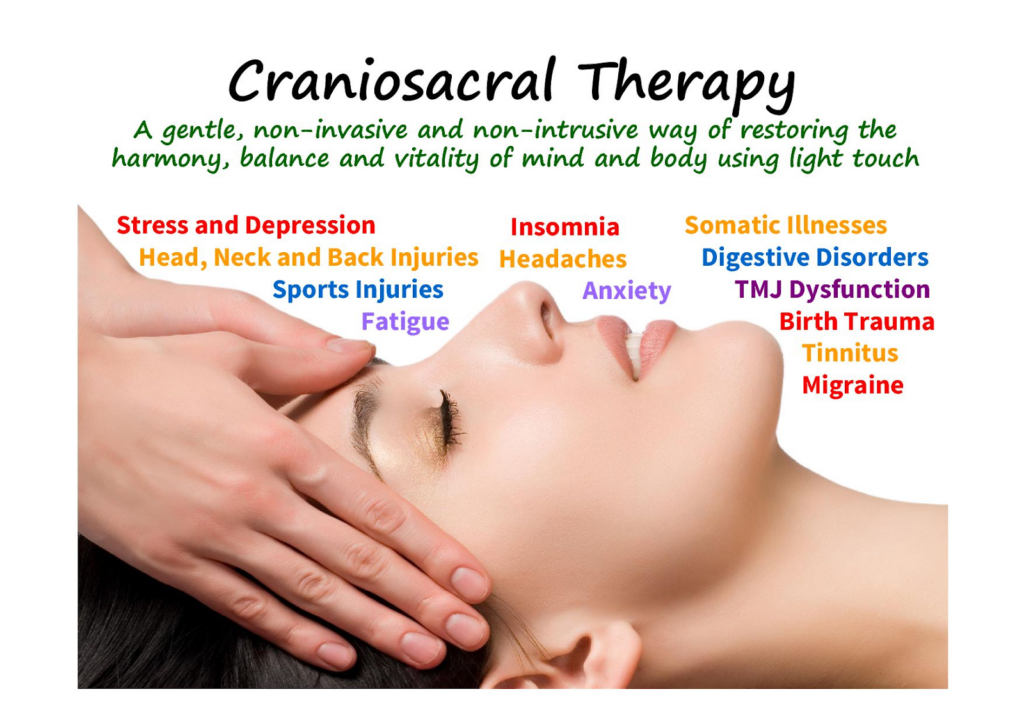
Cranial Sacral Therapy (CST) is an integrated technique that uses a light touch to stimulate healing in the body. To comprehend how CST operates as a form of therapy, it is important to consider its basic concepts and modalities.
This article focuses on the main ideas and techniques of CST, providing detailed practice, efficiency, and advantages for the body.
What are the main concepts of Cranial Sacral Therapy?
The main concept of craniosacral therapy is balancing the central nervous system and other bodily activities. Specialists presume that any restriction or imbalance in the craniosacral structure can result in physiological or psychological health problems.
As such, gentle rocking of the cervical vertebra, membranes, and spinal fluid is intended to normalize the extreme functioning of the body in order to reduce stress and allow for better operations of the body system. Since it enhances the body itself, CST is effective in the treatment of many disorders including chronic pain, a range of headaches, or even emotional traumas that may be difficult to treat.
How Cranial Sacral Therapy Works?
CST helps work by locating obstruction and restrictions around the craniosacral system which inhibits the body from working at its optimal capacity. The therapist employs light, intentional manual contact, usually on the head, neck, and/or lower back, where gentle pressure is applied.
By doing so, these light moves assist in releasing any physical barriers or dysfunction that is either causing pain or any other dysfunction. The practice of CST assists in supporting realignment and stress reduction and return to equilibrium, which facilitates healing by restoring normal motion to the craniosacral system.

What are the benefits of Cranial Sacral Therapy?
There are several advantages of CST making it applicable in both physical and emotional ailments. Further, treatment makes patients to experience lesser pain and mobility in their bodies, as well as bettering the mental aspects thereafter. CST relieves even chronic headaches, and migraines, neck and back pain as well as stress and trauma by relieving tension in the craniocerebral system.
Some of the effects of this therapy are leaning towards relaxation and reduced levels of tension which consequently results in better health. A number of their patients have decreased levels of fatigue and increased immune response following regular CST treatments.
What techniques are used in Cranial Sacral Therapy?
The techniques of CST palpation and traction. During palpation, practitioners note subtle movements and rhythms in the craniosacral system and can therefore pinpoint areas that are afflicted by an imbalance or a restriction. It is pressure, which is to relieve such areas of tension so as to correct the imbalance.
Pulling or traction is also at times employed to slowly elongate the back and relieve the pressure and weights the cranial bones or membrane may have. These are very simplistic techniques that cause minimum invasions to the body as they utilize the natural ability of the body to heal both physically and emotionally. Each session is individualized as per the requirements of the patient.

How is Cranial Sacral Therapy performed?
Cranial Sacral Therapy is performed with the client lying, fully clothed, on a massage table. Gentle, hands-on techniques, by the therapist, are used to gather information on areas such as the skull, spine, and sacrum for craniosacral system imbalances and to release restrictions.
Using light contact, the therapist will palpate the craniosacral system to feel out any irregularity in motion from cranial bones and/or fluid movement.
When detected, the therapist will delicately manipulate such areas by using slow, subtle motions that restore the balance of such areas. This manipulation could help release tension, increase fluid movement, and enhance the body’s natural self-healing mechanism. Sessions usually run from 45 to 60 minutes in length.
For whom is Cranial Sacral Therapy indicated?
Cranial Sacral Therapy can be administered to all patients suffering from chronic pains, migraines, and stress disorders. It is also used in trauma treatment and disorders of anxiety and emotional imbalances by inducing relaxation and restoring balance to the central nervous system.
CST could also be indicated for people who have undergone surgery or injury, whereby this modality decreases inflammation and accelerates the healing process. Due to the gentleness of this intervention, it is appropriate for all age brackets, ranging from newborns to aged individuals, and can thus easily be applied within the concept of holistic health.
Wrapping Up!
Cranial Sacral Therapy is the most gentle yet effective approach to healing through its focus on the balance of the craniosacral system. The concept and techniques involved in CST bear many years of practice that make it a vital add-on to holistic health practices. Be it pain mitigation, emotional balance, or post-trauma rehabilitation, CST is a non-invasive treatment that falls in line with nature’s innate body healing capabilities and helps an individual restore his/her aggregate health and balance.

